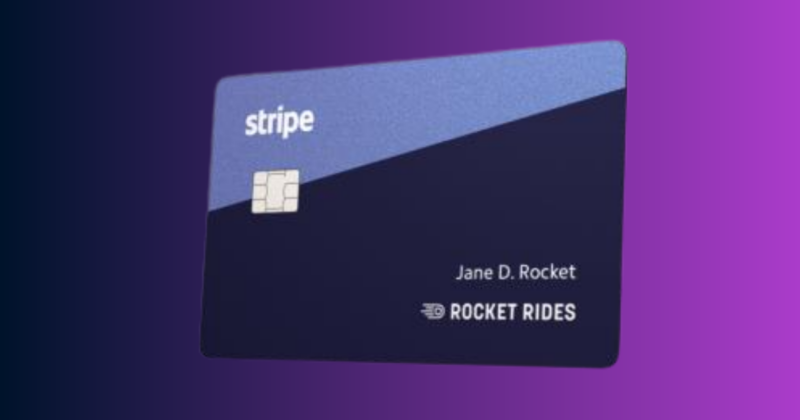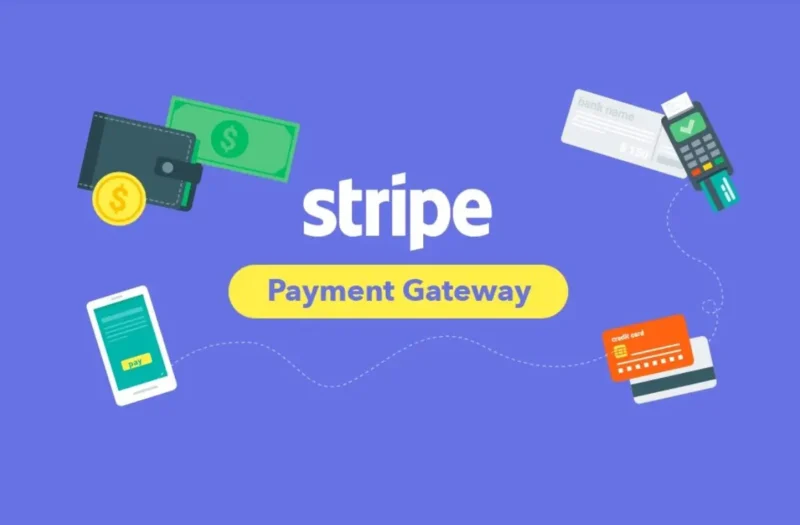Discover the ins and outs of Stripe credit card charges and why grasping this payment system is crucial for businesses and customers. Delve into understanding the world of Stripe credit card charges and their significance.
TOC
What is the Stripe credit card charge?

A Stripe credit card charge involves the initiation and completion of a transaction via the Stripe payment processing system. Stripe serves as an intermediary facilitating secure online transactions between businesses and customers. By integrating Stripe into their websites or applications, businesses can securely accept credit card payments globally.
Understanding Stripe Credit Card Charges
You may be inquisitive about the significance of understanding Stripe credit card charges. The rationale lies in the manifold advantages it offers. Primarily, Stripe furnishes businesses with a reliable and effective payment gateway, leading to seamless transactions and enhanced customer satisfaction. By comprehending how Stripe credit card charges operate, businesses can refine their checkout procedures, lessening the occurrence of failed charges and abandoned carts.
Moreover, a comprehensive grasp of Stripe credit card charges is pivotal for preempting and resolving transaction-related issues. Businesses that acknowledge the common challenges linked to failed charges, disputed charges, and fraudulent attempts can proactively safeguard customers’ interests and uphold their reputation. Additionally, a thorough understanding of refund and cancellation protocols empowers businesses to promptly and efficiently address such requests.
Ultimately, familiarizing oneself with Stripe credit card charges holds significance for both businesses and customers. Proficiency in the fundamentals of this payment processing system enables businesses to deliver a seamless checkout experience for their customers while safeguarding their interests. Let us delve into how Stripe credit card charges function and equip ourselves with the knowledge required to adeptly navigate this digital terrain. Anticipate the subsequent section, which will delve further into the intricacies of How Stripe Credit Card Charges Operate.
How Stripe Credit Card Charges Work

Overview of Stripe’s Payment Processing System
To grasp the workings of Stripe credit card charges, let’s delve into the Stripe payment system. Serving as a secure intermediary between businesses and customers, Stripe facilitates online transactions seamlessly. With its robust infrastructure and advanced features, Stripe has emerged as a top choice for businesses of all sizes.
When a customer initiates a credit card transaction through a Stripe-integrated platform, the payment details are securely transmitted to Stripe’s servers. Stripe meticulously validates the card information to detect any potential issues or fraudulent activities. Subsequently, Stripe proceeds to authorize and capture the transaction amount from the customer’s credit card post verification of the payment details.
Process of initiating a credit card charge through Stripe
Let’s explore how to initiate a credit card charge using Stripe. This process involves several steps to ensure a seamless and secure transaction. Firstly, the customer selects their desired products or services and proceeds to the checkout page. They input their credit card details, including the card number, expiration date, and CVV code.
Upon entering payment information, Stripe’s payment gateway securely transmits it to the relevant card network (Visa, Mastercard, etc.). The card network then verifies the transaction and reaches out to the customer’s issuing bank to confirm fund availability. Once approved, the issuing bank provides an authorization code to Stripe, confirming the transaction.
Key Elements of a Stripe Credit Card Charge
A Stripe credit card charge comprises several essential components that collaborate to execute the transaction successfully. These components include:
– Card Details: The customer’s credit card information (e.g., card number, expiration date, and CVV code) plays a crucial role in securely processing the charge.
– Stripe’s payment gateway acts as a conduit linking the customer, the merchant, and the card network. It securely transmits payment data and facilitates the transaction.
– Card Network: The card network (e.g., Visa or Mastercard) is pivotal in authenticating and authorizing transactions to ensure fund availability.
– Issuing Bank: The customer’s issuing bank validates the transaction, verifies fund availability, and provides an authorization code to Stripe.
Comprehending these components is vital for businesses and customers alike, enabling them to navigate the Stripe credit card charge process seamlessly. In the subsequent section, we will delve into common issues with Stripe credit card charges and effective resolution strategies. Stay tuned for more insights!
Common Issues With Stripe Credit Card Charges

When dealing with Stripe credit card charges, businesses and customers often encounter various issues. It’s crucial to grasp these challenges to handle transactions efficiently and ensure a seamless payment process. Let’s explore prevalent difficulties and their solutions.
Failed Charges and their Causes
Failed charges can be inconvenient for both businesses and consumers. Understanding the causes of these failures is critical to reducing their occurrence. Insufficient funds, expired cards, incorrect payment information, and technical glitches are common causes of failed charges. To address these concerns, businesses should provide clear instructions and error messages during the checkout process. Furthermore, automating retries and notifying customers about failed charges can help to resolve the issue quickly.
Disputed charges and chargebacks
When customers contest a charge or ask for a refund through their credit card company, it leads to disputed charges and chargebacks. Reasons vary from unauthorized transactions to product dissatisfaction or billing mistakes. To manage these issues effectively, businesses need a clear dispute resolution process. Engaging with customers, presenting transaction evidence, and addressing concerns promptly are key steps to minimize chargebacks and uphold customer satisfaction.
Fraudulent Activity and Prevention
Fraud poses a major threat to businesses and customers alike. Scammers may try unauthorized transactions or exploit payment system weaknesses. To combat fraud, businesses must implement robust security measures such as two-factor authentication, address verification systems, and fraud detection tools. Vigilantly monitoring transactions and suspicious behavior can help identify and prevent fraudulent charges, safeguarding both businesses and customers.
HanD.ing refunds and cancellations.
Refunds and cancellations are part of every business’s operations. When it comes to Stripe credit card charges, a clear refund and cancellation policy is required. Refund requests should be handled promptly and efficiently in order to maintain customer satisfaction and avoid chargebacks. Businesses should establish transparent refund processes, clearly communicate their policies to customers, and process refunds as quickly as possible.
In the following section, we’ll look atBest Practices for Handling Stripe Credit Card Chargess, including how to optimize the checkout process and ensure secure transactions. Stay tuned to learn how to improve your payment processing experience.
Best Practices for Managing Stripe Credit Card Charges

Credit card charges processed through Stripe play a pivotal role in the prosperity of numerous online ventures. To guarantee seamless transactions and enhance customer satisfaction, it is imperative to adopt best practices when dealing with these charges. Let’s delve into some effective methods for enhancing your management of Stripe credit card charges.
Providing Secure Transactions and Customer Data Protection
Security is paramount for online transactions. Establishing trust and safeguarding customer data requires robust security measures. Incorporate SSL encryption in your website or application to secure sensitive data during transmission. Regularly update and patch systems to reduce vulnerabilities. Explore tokenization as a way to enhance security by replacing credit card numbers with encrypted tokens, reducing the risk of data breaches.
Optimizing Checkout Process to Reduce Failed Charges
Businesses often grapple with the significant hurdle of minimizing failed charges at checkout. Simplifying the checkout process can diminish friction and boost transaction success rates. Enhance your payment form by ensuring it is straightforward and user-friendly, requesting only essential details. Offer precise guidance and error alerts to assist users in finalizing the payment. Steer clear of superfluous distractions or lengthy procedures that could potentially result in customer abandonment.
Implementing Effective Fraud Detection Measures
Safeguarding your company and customers against fraudulent activities is of utmost importance. It is crucial to integrate strong fraud detection measures to thwart unauthorized transactions and chargebacks. Utilize Stripe’s advanced fraud prevention tools like Radar, which employ machine learning algorithms to identify suspicious activities. Set up criteria and limits to highlight questionable transactions for manual inspection. Consistently analyze transaction trends and introduce extra security protocols when necessary.
Offering timely customer support for charge-related inquiries is crucial. Exceptional customer service plays a pivotal role in effectively handling Stripe credit card charges. Ensure your support team is well-trained and equipped to swiftly and professionally address charge-related queries. Respond promptly to customer inquiries with clear and concise explanations. Provide various communication channels like live chat or email to cater to diverse customer preferences. By promptly and efficiently addressing customer concerns, you can enhance satisfaction and loyalty.
In essence, embracing best practices in managing Stripe credit card charges is vital for ensuring secure transactions, minimizing failed charges, thwarting fraud, and delivering outstanding customer service. Prioritizing these strategies empowers businesses to streamline their payment processes, enhance customer interactions, and cultivate a reputation for reliability and trustworthiness. In the subsequent section, we will share valuable insights on resolving common issues related to Stripe credit card charges.
Tips for Resolving Stripe Credit Card Charge Issues

Resolving Stripe credit card charges, akin to any payment processing system, may encounter occasional challenges necessitating swift resolution. Below, we outline practical tips for effectively addressing common issues that may arise during Stripe credit card transactions.
Troubleshooting Failed Charges and Error Messages
Encountering a failed charge or error message can be frustrating for both businesses and customers. To troubleshoot these issues, verify the accuracy of the payment details entered, including the credit card number, expiration date, and CVV code. Additionally, ensure that the customer’s billing address aligns with the one linked to the credit card.
To maintain improved speed and performance long-term, it’s crucial for runners to include strength training in their routine.
Dealing with disputed charges and chargebacks can be a significant challenge for businesses. When a customer raises a dispute, quick response times and providing evidence of the transaction or service completion are vital. Keeping detailed documentation of transactions and customer interactions can strengthen your position during dispute resolution. Adhering to Stripe’s guidelines and promptly addressing any information requests is important.
Prevent suspicious transactions
Protecting your company and customers from fraudulent activities is paramount. Utilize fraud detection tools like Stripe Radar to identify and prevent suspicious transactions. If you suspect fraudulent activity, report it to Stripe immediately and provide relevant evidence. Reporting fraudulent activity and implementing proactive measures can help ensure the smooth operation of the Stripe payment processing system.
Managing refunds and cancellations effectively is a standard part of business operations and must be handled correctly. When issuing a refund, ensure that the funds are returned to the original payment method used by the customer. Clearly communicate the refund process to the customer and offer timely updates. Establish a streamlined procedure for handling cancellation requests to provide a consistent customer experience.
In summary, following these guidelines will help you navigate and resolve various issues related to Stripe credit card charges effectively. Troubleshooting failed charges, addressing disputes, handling fraud, and managing refunds and cancellations are all crucial elements in ensuring a seamless payment processing experience. Stay tuned for the final section, where we’ll recap the key points covered in this article and underscore the significance of proactive Stripe credit card management.
Conclusion

In conclusion, mastering Stripe credit card charges is vital for businesses aiming to deliver top-notch customer experiences and ensure secure, seamless transactions. Understanding the nuances of the Stripe payment processing system empowers businesses to enhance checkout efficiency, minimize failed charges, and swiftly manage disputes and fraud incidents.
Throughout this piece, we’ve delved into the essentials of Stripe credit card charges, elucidating their mechanisms and underscoring the significance of comprehension. We’ve highlighted the crucial aspects of secure transactions, safeguarding customer data, and robust fraud detection measures. Furthermore, we’ve stressed the importance of responsive customer service to address charge-related queries promptly.
To excel in handling Stripe credit card charges, businesses must adeptly troubleshoot failed transactions, resolve charge disputes and chargebacks, and effectively combat fraudulent activities. By embracing best practices and adhering to industry standards, businesses can enhance their payment processing efficiency and cultivate customer confidence.
Recognizing the pivotal role of Stripe credit card charges for businesses, our comprehensive ERP solutions seamlessly integrate with Stripe, enabling businesses to streamline payment procedures and efficiently manage credit card charges. With our expertise and reliable support, we aim to empower businesses in navigating the complexities of Stripe credit card charges successfully.
In the competitive landscape of online transactions, maintaining a competitive edge necessitates a deep understanding of payment processing systems like Stripe. Businesses can secure their digital prosperity by staying informed, proactive, and dedicated to delivering exceptional customer experiences.
